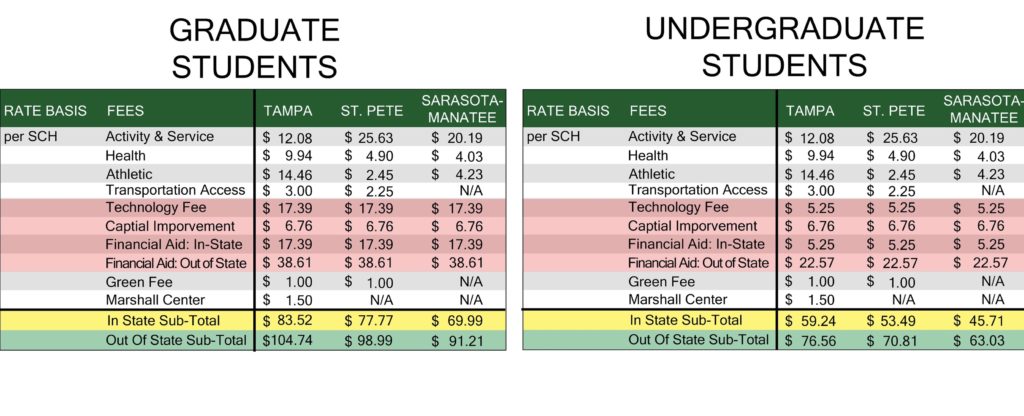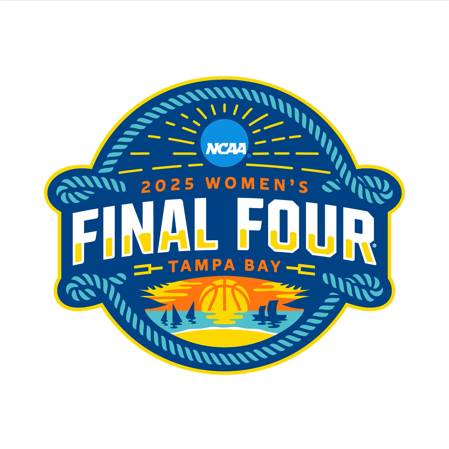
A universal Activities and Services fee could mean a “higher financial burden” on USF’s two smaller campuses. Crow’s Nest file photo
By Emily Wunderlich and Dylan Hart
One student fee structure. One Student Government. And, possibly, one student newspaper.
Those are some of the implications outlined in USF system President Steve Currall’s “preliminary blueprint” to consolidate three campuses into one, consolidated university.
But with consolidation planning deadlines looming, questions still abound.
“Students first” is a top priority of Currall’s blueprint, which says students would get equal access to academic and extracurricular programs on all three campuses.
Under the plan, the cost of attendance would be the same for all students, regardless of campus.
That is, if planners decide to assign each student a “home campus.”
It’s unclear whether students would get to pick their home campus like a major, or if the home campuses would be determined by administrators and used for internal planning purposes.
If implemented, the home campus designation would allow students to pay only the fees associated with their campus.
But Currall also proposed a universal Activities and Services fee “maintaining equitable services for each campus.”
His plan does not specify whether the uniform fee depends on the home campus designation.
A Sept. 11 editorial in the Tampa Bay Times noted the blueprint “needs more work if it’s going to benefit all USF students and the St. Petersburg campus in particular.”
Althea Paul, communications manager for USF, directed students to the university’s consolidation FAQ page for answers.
“Students enrolled as of Spring 2020 will pay tuition and fees at current local rates through graduation (provided they are continually enrolled in subsequent semesters and graduate no later than December 2023), unless those rates are changed at any point by the state legislature or Florida Board of Governors,” the page says.
“Students first enrolling in Summer 2020 will pay current local tuition and fees for that term and, beginning Fall 2020 will pay rates aligned with the Preeminent university.”
USF St. Petersburg spokeswoman Carrie O’Brion said the universal fee structure could bring positive change to the campus.
“We are pleased that students will be able to participate in activities on any USF campus following consolidation,” she said. “In addition, we anticipate being able to expand our Health & Wellness offerings on this campus as a result of consolidation.”
But others, like Dwayne Isaacs, director of Student Life and Engagement in St. Petersburg, weren’t so sure.
Currently, undergraduate students at USF St. Petersburg pay the highest A&S fee, at $25.63 per credit hour — just more than double that of those at the Tampa campus.

A uniform fee structure could mean a cost increase for USF St. Petersburg and USF Sarasota-Manatee students.
MK Brittain | The Crow’s Nest
USF Tampa students pay an additional $1.50 per credit hour to fund the Marshall Student Center.
“How is it going to be uniform when we have a different student center? Will our students who designate St. Pete as a home campus still have to pay the Marshall Student Center fee?” Isaacs asked.
“I don’t think anyone has the answer to that.”
Leaders scramble to solve SG puzzle
Part of the consolidation plan includes collapsing the three campus Student Governments into a single Student Government Association.
The three Student Governments have been meeting since earlier this year for the System President’s Advisory Board. SPAB has worked to prepare for the looming effects of consolidation and has anticipated a single student government for the university, but the specifics have long been a mystery.
Now, Currall’s plan shows a “path forward” for SG. But a lot of questions remain unanswered.
The plan designates start and end dates for several steps of the consolidation transition. One mark on the calendar is the drafting of a new constitution, which started on June 3 and is projected to end on Sept. 30.
But Isaacs said the plan’s lack of clarity has made it difficult for SPAB to draft the constitution, which will outline the new structure of Student Government and its process for allocating student fees every year.
Afterward, the timeline says that a “student referendum” on SG will start Oct. 1. It does not explain what that referendum will entail.
Currall’s plan seeks to address one of the biggest concerns put forth by SPAB and former members of SG – equity among the campuses.
It says that the consolidation task force wishes to “ensure alternating campus officer representation,” to “define a clear process for equitable budget allocation,” and to “allow for equitable representation of student-elected positions across all three campuses.”
But the specifics of how that would be implemented remain a mystery.
David Thompson, who was student body president of USF St. Petersburg in 2016-2017, raised his concerns to the task force about consolidation’s potential consequences for St. Petersburg.
“I served as Student Body President when consolidation was passed into law,” Thompson said in an online comment submitted to the consolidation task force. “We interacted with students across our campus and came up with a list of key priorities during the legislative process.”
Among his priorities were “a continued commitment to small class sizes” at USF St. Petersburg, the continuance of campus-specific organizations like the Honors College and Compass, and the continued authority of SG to fund organizations locally.
Stop the presses?
Currall’s blueprint appears to suggest that A&S fees would be distributed based on the population of USF’s three campuses.
“The resulting financial burden could be higher on students on the smaller campuses,” the blueprint says.
As such, he recommends The Crow’s Nest and The Oracle, the twice-weekly student paper in Tampa, explore “a fully online publication” between 2020 and 2023 to reduce printing costs and increase access for all students.
That language echoes the recommendations of a subcommittee of university staff that studied the implications of consolidation on student organizations.
Last fall, without consulting the editors of either paper, the subcommittee first proposed a single print paper with a new name and inside sections that could be called The Crow’s Nest and The Oracle.
It also called for exploration of “a fully online newspaper.”
The two newspapers, which began publication in the 1960s, have always been separate, even in the era when St. Petersburg was a tiny satellite campus under the control of Tampa. The Sarasota-Manatee campus does not have a newspaper.
The staffs of both papers strongly opposed the proposal to merge the papers, and the journalism faculties in both St. Petersburg and Tampa also issued statements of opposition.
That prompted the planning subcommittee to revise its recommendations.
This year, The Crow’s Nest was allocated an operating budget of $40,255.80 – a 23.4-percent decrease from the previous year. The paper and its staff of 10 students publishes 500 copies a week.
In 2022, the blueprint suggests creating “a plan to collaborate in order to serve the USF Consolidated campuses.”
By the following year, the blueprint calls for further “assessments/research on readership and student campus identification in regards to considering whether there should be a consolidated structure.”
“As long as no one loses anything, I’ll be happy,” Isaacs said. “If there are gains for each campus, I think that’s what the spirit of consolidation is all about.”


